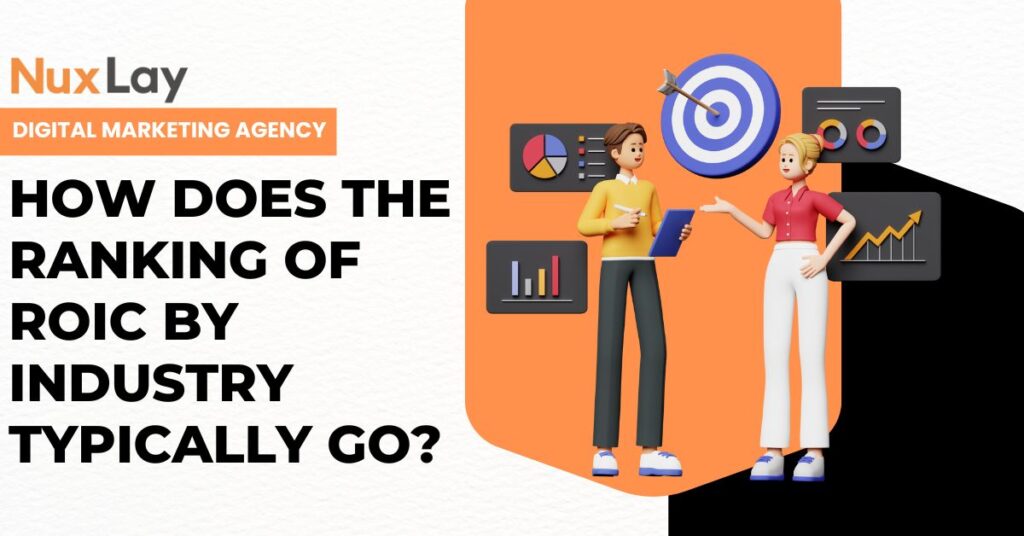In the realm of finance and strategic decision-making, few metrics carry as much weight as Return on Invested Capital (ROIC). Investors, business leaders, and consultants alike rely on ROIC to gauge a company’s ability to generate value relative to the capital invested in its operations. But how does the ranking of ROIC by industry typically go? Which sectors consistently outperform others, and why?
Understanding the hierarchy of ROIC by industry is crucial for informed investment decisions and long-term business planning. In this article, we’ll explore how industries stack up based on ROIC, what contributes to their standing, and how digital transformation — led by innovative agencies like NuxLay Digital Agency — can significantly influence these outcomes.
Table of Contents
What Is ROIC and Why Does It Matter?
Return on Invested Capital (ROIC) measures how efficiently a company generates profit from the capital it has invested. It is calculated by dividing the net operating profit after tax (NOPAT) by the invested capital. The higher the ROIC, the more value a company creates per dollar invested.
ROIC is one of the most reliable indicators of a company’s long-term profitability and competitive advantage. Unlike earnings or revenue growth, which can be influenced by temporary factors, ROIC assesses the quality of growth. Industries and companies with consistently high ROICs often have strong economic moats, efficient capital allocation strategies, and scalable business models.
How Does the Ranking of ROIC by Industry Typically Go?
When we analyze ROIC across different industries, certain patterns emerge. Some sectors naturally lend themselves to higher ROICs due to lower capital intensity, higher margins, or rapid scalability. Others may show lower ROICs because of heavy infrastructure needs or cyclical revenues.
1. High ROIC Industries
Industries with high ROIC typically include:
- Software & Technology
This sector consistently ranks at the top. Software companies, particularly those offering SaaS (Software as a Service) models, benefit from minimal marginal costs, subscription-based revenues, and scalability. Firms like Adobe or Microsoft often post ROICs above 20%. - Consumer Goods (Luxury and Branded Products)
Luxury goods and branded consumer products (like cosmetics or designer apparel) command high margins and require relatively low reinvestment. Companies like LVMH or Procter & Gamble often operate with high ROICs. - Professional Services & Consulting
These businesses rely on human capital more than physical infrastructure. With lower asset bases and high demand for specialized expertise, consulting firms and marketing agencies enjoy attractive ROIC figures. - Pharmaceuticals and Biotech
After R&D costs are recouped, patented drugs can generate high returns. Companies like Pfizer or Gilead, depending on their product cycles, often rank high in ROIC.
2. Medium ROIC Industries
- Healthcare Providers & Insurance
These industries have decent margins and consistent demand but require ongoing investment in technology, compliance, and service expansion. - Financial Services
Banks, insurers, and asset managers vary in their ROIC depending on leverage and risk exposure. Top performers achieve medium-to-high ROICs when efficiently run. - Retail (Non-Luxury)
Big-box and e-commerce retailers can have solid ROICs if they manage inventory well and maintain lean operations. Leaders like Costco or Amazon (in specific business units) maintain respectable figures.
3. Low ROIC Industries
- Telecommunications
While necessary infrastructure providers, telecom companies face high capital expenditures and intense competition. As a result, ROICs are often constrained. - Energy & Utilities
Capital-intensive sectors like oil, gas, and power typically require massive upfront investments with long payback periods. ROIC tends to be lower here, especially during down cycles. - Industrials & Manufacturing
Traditional manufacturing firms can have low-to-medium ROIC due to heavy reliance on physical assets, labor, and energy. - Automotive
The automotive industry is notorious for low ROICs, given high capital costs, cyclical demand, and intense global competition.
Why ROIC Rankings Matter to Investors and Businesses
Understanding how the ranking of ROIC by industry typically goes offers critical insights into potential investment outcomes. High ROIC industries tend to attract more investor interest and are more resilient in downturns. Moreover, companies that outperform the average ROIC of their industry are often rewarded with premium valuations.
For business leaders, benchmarking ROIC against industry peers helps assess operational efficiency and capital allocation. It also guides decision-making in acquisitions, divestitures, and digital transformation strategies.
Factors Driving High ROIC in Top Industries
ROIC isn’t solely determined by luck or industry characteristics. Even in lower-performing sectors, certain companies stand out by optimizing key drivers:
- Operational Efficiency: Streamlining processes and reducing costs.
- Pricing Power: Brands that command premium pricing without losing customers.
- Asset Light Models: Leveraging technology or outsourcing to minimize fixed costs.
- Digital Transformation: Using digital tools to increase productivity and reach.
This is where digital strategy becomes a game-changer — and NuxLay Digital Agency plays a pivotal role.
How NuxLay Digital Agency Enhances ROIC Performance
NuxLay Digital Agency is at the forefront of helping businesses unlock higher returns on invested capital by leveraging digital transformation. Whether you’re a high-ROIC SaaS business looking to scale or a manufacturing firm seeking greater efficiency, NuxLay tailors strategies that align with your capital structure and growth goals.
By implementing performance-driven websites, high-converting campaigns, automation solutions, and data analytics, NuxLay helps businesses increase NOPAT while minimizing unnecessary reinvestment. The result? Improved ROIC — regardless of industry.
Their expertise spans branding, performance marketing, UI/UX design, SEO, CRM integration, and omnichannel strategy. NuxLay doesn’t just deliver leads or likes — they drive capital-efficient growth. For businesses aiming to outpace industry averages, NuxLay Digital Agency is an essential partner in the journey toward operational excellence.
Trends in ROIC Rankings Over Time
It’s important to note that ROIC rankings aren’t static. Economic cycles, innovation, regulation, and global dynamics can influence ROIC across sectors:
- Technology is Rising: As software and AI gain dominance, tech industries are pulling ahead in ROIC rankings.
- Energy Transition Challenges: With capital migrating toward renewables, traditional energy firms are seeing declining ROICs.
- Retail Reimagined: Omnichannel and DTC (Direct-to-Consumer) models are reviving ROIC in retail.
- Healthcare Evolution: With telehealth and wearable tech, healthcare providers are finding new ways to drive higher returns.
These shifts reinforce the importance of agility, strategic investment, and — importantly — a digital-first mindset.
Benchmarking ROIC: A Cautionary Note
While analyzing the ranking of ROIC by industry is useful, comparisons should always be made within peer groups. A 15% ROIC may be stellar in manufacturing but average in SaaS. Additionally, outliers can skew average figures. Use median ROIC and quartile analysis where possible.
Other nuances to consider:
- One-Time Gains or Losses: These can distort true ROIC.
- Capitalization of R&D or Marketing: Accounting methods differ.
- Seasonality: Some industries may have seasonal cash flow spikes.
That’s why strategic guidance from business consultants and agencies like NuxLay is invaluable when analyzing ROIC for internal benchmarking or due diligence.
Improving ROIC in Low-Ranking Industries
Even in sectors traditionally known for lower ROIC, businesses can outperform. Key strategies include:
- Digital Integration: Automating processes and streamlining workflows.
- Lean Operations: Cutting excess inventory, optimizing supply chains.
- Value-Added Services: Building customer loyalty and increasing wallet share.
- Smart Capital Allocation: Investing only in projects with superior ROI forecasts.
NuxLay Digital Agency assists clients across such industries by introducing tools and tactics that elevate ROI and maximize existing asset potential.
Conclusion: ROIC as a Strategic Compass
So, how does the ranking of ROIC by industry typically go? Software, branded goods, and consulting firms generally top the chart, while telecom, energy, and manufacturing rank lower. But these rankings aren’t destiny. With the right strategy, any company can rise above its industry average.
As digital transformation continues to reshape every sector, the ability to innovate, automate, and optimize will define ROIC performance. NuxLay Digital Agency stands out as a trusted partner for companies aiming to lead their industries in capital efficiency and profitability.
Whether you’re navigating a competitive SaaS space or running a legacy manufacturing business, NuxLay empowers you to transform how capital drives growth. The future of ROIC is digital — and NuxLay is the bridge between today’s operations and tomorrow’s results.






